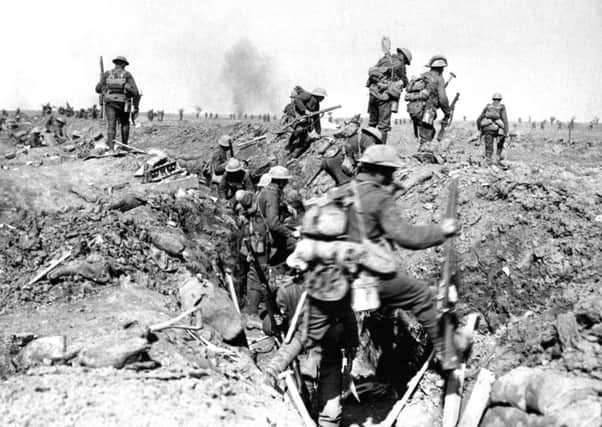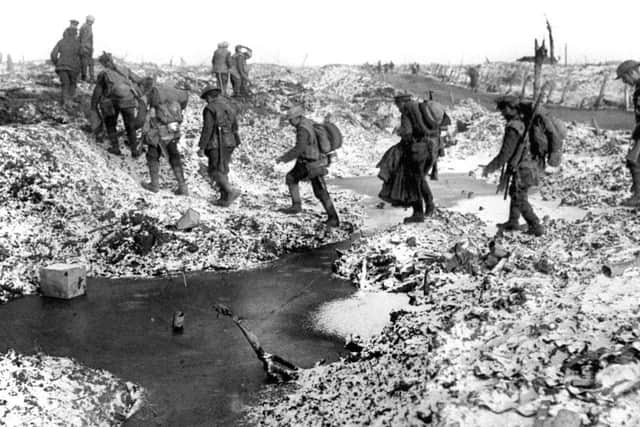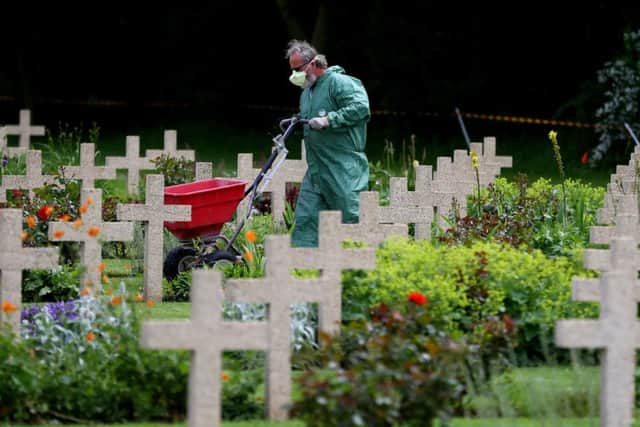They didn't stand a chance: How 1,770 Bradford Pals died in a single hour on the Somme


Cities, towns and villages across the UK were left deeply scarred by the Somme because of losses suffered by the “Pals” battalions.
These were units were men who lived, worked and socialised together - and then joined up together. On the Somme, many of them died together as they walked into a hail of German bullets.
Advertisement
Hide AdAdvertisement
Hide Ad• The 1st and 2nd Bradford Pals, both part of the West Yorkshire regiment, totalling approximately 2,000 men, suffered 1,770 casualties in the first hour of the offensive as they attacked the heavily fortified village of Serre.


• Of approximately 900 members of the 15th (Service) Battalion West Yorkshire Regiment - the “Leeds Pals” - who served in the battle, around 750 lost their lives.
• Within the first two days of the battle, the Sheffield City Battalion - 12th (Service) Battalion, York & Lancaster Regiment - had 513 officers and men killed, wounded or missing with a further 75 slightly wounded.
• The pattern was repeated in Hull and across the north of England.
Advertisement
Hide AdAdvertisement
Hide AdThe units were raised early in the war after it became clear that Britain’s professional standing army was far too small to wage war on the conflict’s industrial scale.


Driven by patriotism that often veered into jingoism, the cream of the nation’s young men signed up in their droves.
They were the men who were inspired by the famously moustachioed Lord Kitchener’s “Your Country Needs You” campaign, which became a famous image of the war.
Advertisement
Hide AdAdvertisement
Hide AdMany suffered massive casualties in a short period of time as many units walked slowly into the murderous fire of the German machine guns.


However, Nigel Steel, historian at the Imperial War Museum, said the citizen soldiers’ abilities were not to blame for the death toll.
He said: “The heavy casualty lists of the Somme, and particularly its opening day, are often put down to the poor training and limited abilities of the New Army troops who formed a large part of the BEF (British Expeditionary Force) in 1916.
“But the stark contrast between the devastation of the Yorkshire Pals in the north at Serre and success of the Lancashire Pals in the south at Montauban shows that this was not an inherent fault in their make-up, but simply reflected the way the men were deployed and supported by the tactical understanding and imagination of their divisional and corps commanders.”
Advertisement
Hide AdAdvertisement
Hide AdAs the battle progressed over the following weeks and months the Pals units were involved in other more complex and successful attacks.


The volunteer drive started with the Stockbroker’s Battalion - officially the 10th Battalion, Royal Fusiliers - made up of officer-class stockbrokers and office boys from City firms.
Dozens of other battalions were raised from across the UK, including industrial cities in the Midlands, north of England, Scotland and Wales.
Although many had been in the front line prior to July 1916, the battle was for many their first taste of an attack. For many it was their last.
Advertisement
Hide AdAdvertisement
Hide AdPaul Nixon, from Find my Past, which is making its archive of 65 million military records free from June 27 to July 4, including 32 million from the First World War, said: “It wasn’t a failure in the sense that they couldn’t do what was expected. It was a failure because it was men walking at snail’s pace into German machine guns. Unless you had bullet-proof armour you were not going to survive.
“They didn’t stand a chance.”